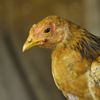Thanks, Daniel! I have a number of favorite articles on this topic. Rather than listing them all here, I'll point to the footnotes of my piece on "
The Importance of Wild-Animal Suffering." Below I'll mention three in particular that first made me think seriously about the topic.
Ng, Yew-Kwang. "Towards Welfare Biology: Evolutionary Economics of Animal Consciousness and Suffering." Biology and Philosophy 10.4 (pp. 255-85), 1995.
Highlights the fact that the happiness and suffering of wild animals is an obvious domain within welfare economics that has so far been ignored. Ng notes that many species give birth to hundreds or thousands of offspring at a time, from which he concludes: "Under the assumptions of concave and symmetrical functions relating costs to enjoyment and suffering, evolutionary economizing results in the excess of total suffering over total enjoyment." (p. 272)
Gould, Stephen Jay. "
Nonmoral Nature." Hen's Teeth and Horse's Toes: Further Reflections in Natural History. New York: W. W. Norton, 1994.
Eloquent discussion of "natural theology" and the ichneumon wasp:
Since a dead and decaying caterpillar will do the wasp larvae no good, it eats in a pattern that cannot help but recall, in our inappropriate anthropocentric interpretation, the ancient English penalty for treason — drawing and quartering, with its explicit object of extracting as much torment as possible by keeping the victim alive and sentient. As the king's executioner drew out and burned his client's entrails, so does the ichneumon larvae eat fat bodies and digestive organs first, keeping the caterpillar alive by preserving intact the essential heart and central nervous system. Finally, the larvae completes its work and kills its victim, leaving behind the caterpillar's empty shell. Is it any wonder that ichneumons, not snakes or lions, stood as the paramount challenge to God's benevolence during the heyday of natural theology?
And:
The "ichneumon fly," which provoked such concern among natural theologians, was actually a composite creature representing the habits of an enormous tribe. The ichneumonoidea are a group of wasps, not flies, that include more species than all the vertebrates combined (wasp, with ants and bees, constitute the order Hymenoptera; flies, with their two wings — wasps have four — form the order Diptera). In addition, many non-ichneumonoid wasps of similar habits were often cited for the same grisly details. Thus, the famous story did not merely implicate a single aberrant species (perhaps a perverse leakage from Satan's realm), but hundreds of thousands — a large chunk of what could only be God's creation.
Nice discussion of the environmentalist position
against regretting the suffering in nature. For instance, Everett quotes Ned Hettinger: "Respecting nature means respecting the ways in which nature trades values, and such respect includes painful killings for the purpose of life support." Of course, I'm disappointed by Everett's own conclusion: "Animal welfarists are not committed to protecting the rabbit from the fox, nor do their principles implicitly deprecate nature." Indeed, I think the failure of animal welfarists to repudiate the suffering in nature is perhaps the greatest shortcoming of the animal movement.


